Si estás aquí, probablemente estés buscando comprender cómo producción de cápsulas Funciona de verdad, de principio a fin. Quizás esté planeando ampliar su sistema, actualizar su maquinaria o simplemente necesite una visión más clara del proceso completo antes de tomar una decisión.
De cualquier manera, este desglose lo guiará a través de cada etapa, sin rodeos, solo los pasos que importan en la producción del mundo real.
Tabla de contenido
La producción comienza con la cubierta de la cápsula. La mayoría de las cubiertas están hechas de gelatina o HPMC, dependiendo de si se trabaja con formulaciones estándar o vegetales. El material seleccionado se calienta y se convierte en líquido.
Se sumergen alfileres metálicos en este líquido para formar las mitades de la cápsula. Estas se secan en condiciones cuidadosamente controladas. Una vez endurecidas, se recortan y separan, listas para el llenado.
A continuación viene el producto que se introduce en la cápsula. Los ingredientes activos se mezclan con excipientes para mejorar la fluidez, la estabilidad y la consistencia. Dependiendo de la formulación, esto puede implicar mezcla en seco o granulación húmeda.
El objetivo es que las partículas tengan un tamaño y un peso uniformes. Esto garantiza que cada cápsula contenga la cantidad exacta de sustancia activa, lo cual es fundamental para la seguridad y el cumplimiento normativo.
Una vez listo el polvo o los gránulos, las cápsulas vacías se introducen en una máquina llenadora. Estas máquinas separan la tapa y el cuerpo de la cápsula, llenan la mitad inferior con el producto y cierran la cápsula.
Las encapsuladoras de alta velocidad pueden procesar polvos, pellets, tabletas o incluso líquidos, según su configuración. Para operaciones de mayor envergadura, la automatización es clave para mantener la velocidad y reducir el desperdicio.
de Canaán Máquina llenadora automática de cápsulas serie NJP Está diseñada precisamente para esta etapa: ofrece un llenado rápido y preciso con mínimo desperdicio. Maneja polvos, gránulos y pellets con facilidad y está diseñada para una producción continua de alto volumen. La Serie NJP es una opción confiable para fabricantes que necesitan velocidad, precisión y cumplimiento normativo en un solo sistema.
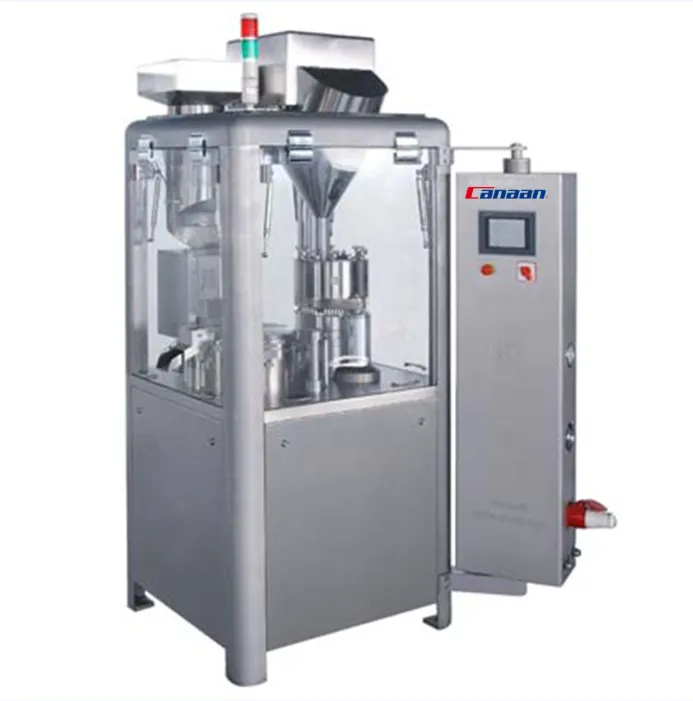
Tras el llenado, las dos mitades de la cápsula quedan firmemente unidas. Algunas máquinas incluyen una función de sellado con banda para mayor protección, especialmente útil para cápsulas sensibles a la humedad o llenas de líquido.
Este paso reduce el riesgo de fugas, manipulación o separación durante la manipulación, el envío o el almacenamiento.
Las cápsulas llenas suelen pasar por una pulidora. Esto elimina el exceso de polvo del exterior y mejora su aspecto. Además, las cápsulas limpias tienen menos probabilidades de atascar las máquinas de envasado posteriores.
Desempolvado Ayuda a cumplir con los estándares de limpieza GMP y mejora la presentación del producto, lo que es especialmente importante para productos minoristas o de venta directa al consumidor.
Cada lote debe superar estrictos controles de calidad. Las cápsulas se inspeccionan para detectar defectos como grietas, llenado insuficiente o diferencias de color. También se verifica la variación de peso para confirmar la precisión de la dosificación.
Muchas líneas incluyen detectores de metales, sistemas de visión y unidades de rechazo para detectar cualquier falla en tiempo real. La documentación en esta etapa es crucial para el cumplimiento normativo y la trazabilidad.
Una vez aprobadas, las cápsulas pasan a la línea de envasado. Pueden embotellarse, blísterizarse o envasarse en sobres, según el formato final.
Durante esta etapa, se imprimen o etiquetan los códigos de lote, las fechas de caducidad y demás información de trazabilidad. La inspección final garantiza que cada envase esté sellado, limpio y listo para su comercialización.
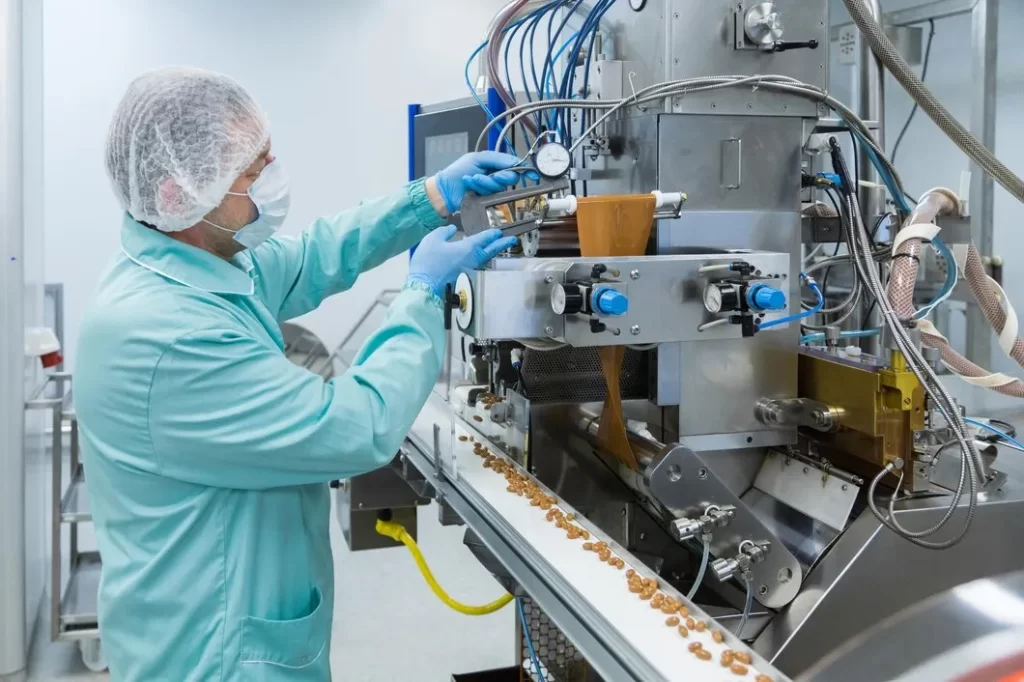
El correcto funcionamiento de una línea de producción de cápsulas depende de contar con el equipo adecuado en cada etapa. Cada máquina contribuye a mantener la consistencia de la producción, reducir los errores y maximizar la eficiencia.
Usando sistemas integrados—donde cada máquina trabaja sincronizada— ayuda a reducir el tiempo de inactividad, los costos de mano de obra y mejorar la trazabilidad. Esto es especialmente importante para empresas que gestionan múltiples SKU o que operan con plazos de entrega ajustados.
Las cápsulas vienen en diferentes presentaciones, y la combinación adecuada depende de su producto, mercado y objetivos de fabricación. A continuación, se presentan las principales opciones a considerar al elegir los tipos de cápsulas y cómo adaptarlas a su marca.
Tipos de materiales:
Tallas:
Opciones de color y marca:
Tipos de relleno:
Personalizar sus cápsulas no solo mejora la usabilidad y el atractivo en las estanterías, sino que también favorece el cumplimiento, la identidad de marca y la confianza del consumidor.
La producción de cápsulas es un proceso preciso que requiere una configuración adecuada, un manejo experto y maquinaria de alto rendimiento. Ya sea que produzca a pequeña escala o manipule millones de cápsulas al día, cada paso cuenta.
En CanaánProporcionamos el equipo y la experiencia para ayudarle a producir cápsulas de manera eficiente y con los más altos estándares.
¿Necesita actualizar su línea de producción de cápsulas? Contáctenos para hablar con nuestro equipo: estamos listos para ayudarlo a escalar de manera más inteligente.
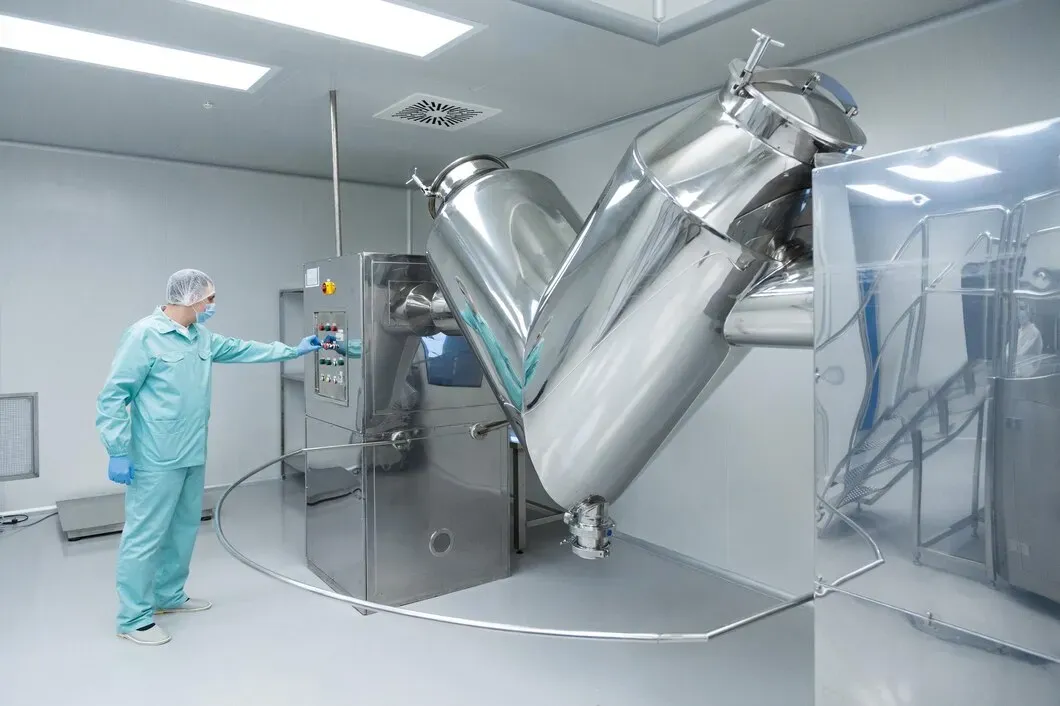
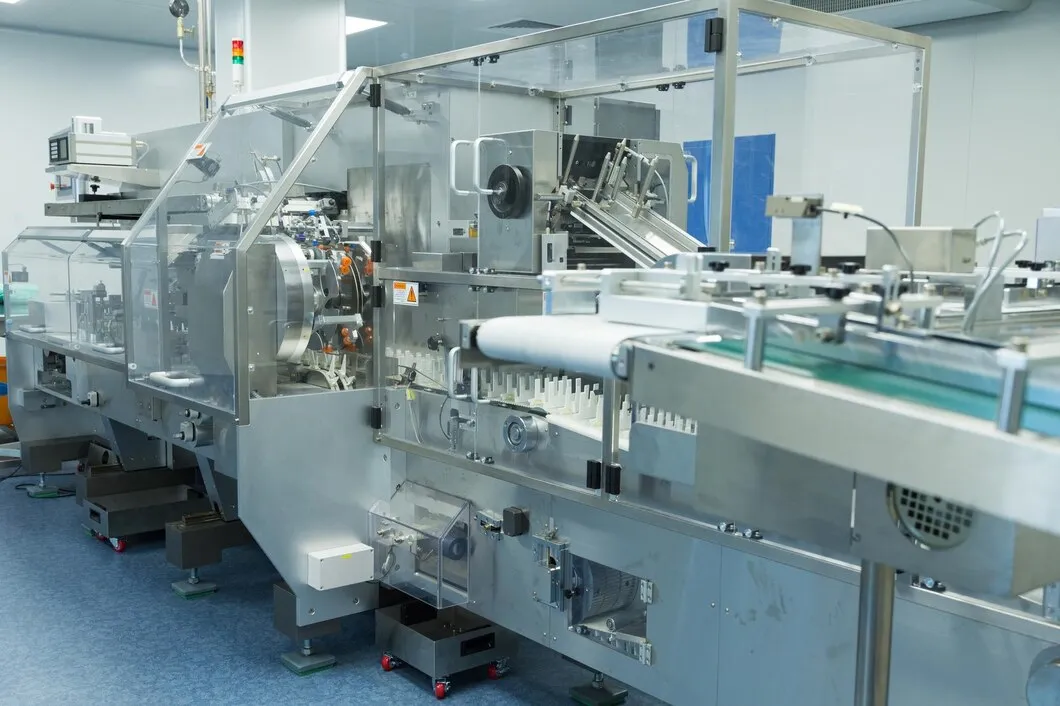
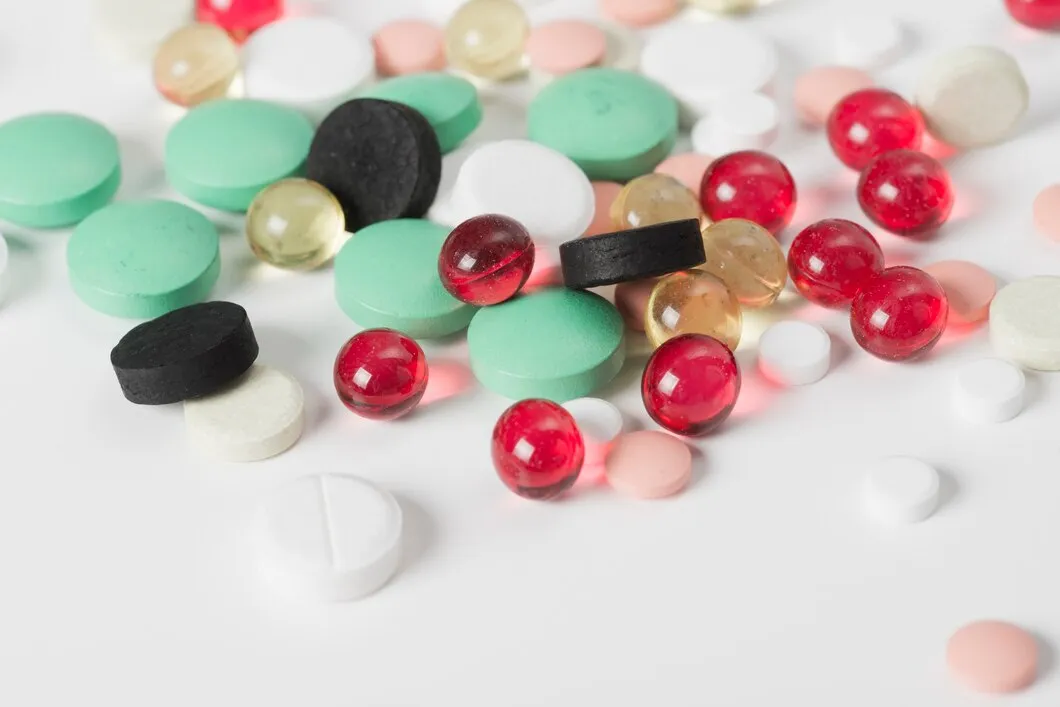

Antes de que un medicamento llegue a un paciente, comienza en un laboratorio. Ahí es donde se prueban las fórmulas, se verifican los lotes y se confirma o cuestiona la calidad. Para realizar este trabajo correctamente, los laboratorios dependen del equipo adecuado: herramientas que no solo cumplen su función, sino que la realizan con precisión. Si eres responsable de la gestión o […]

El blíster está presente en todas partes en la industria farmacéutica, desde comprimidos y cápsulas hasta paquetes de muestra. Protege el producto, prolonga su vida útil y mejora la seguridad del paciente. Pero para los fabricantes, es más que un simple embalaje: es un sistema basado en la velocidad, la precisión y el cumplimiento normativo. Si trabaja en la fabricación farmacéutica o en la adquisición de envases, esto es lo que necesita saber sobre el blíster […]

Si está decidiendo cómo presentar un producto farmacéutico o suplemento, el formato que elija (geles líquidos o tabletas) influirá en mucho más que su apariencia. Afecta la elaboración del producto, su velocidad de absorción, el tipo de equipo necesario y la experiencia del usuario final. Algunos principios activos funcionan mejor en […]